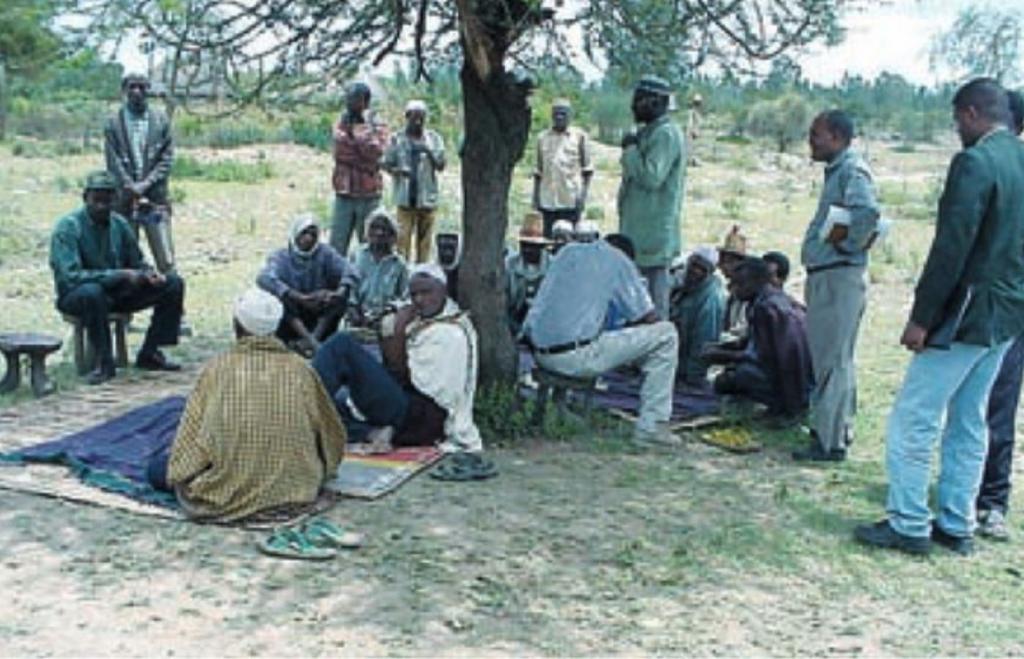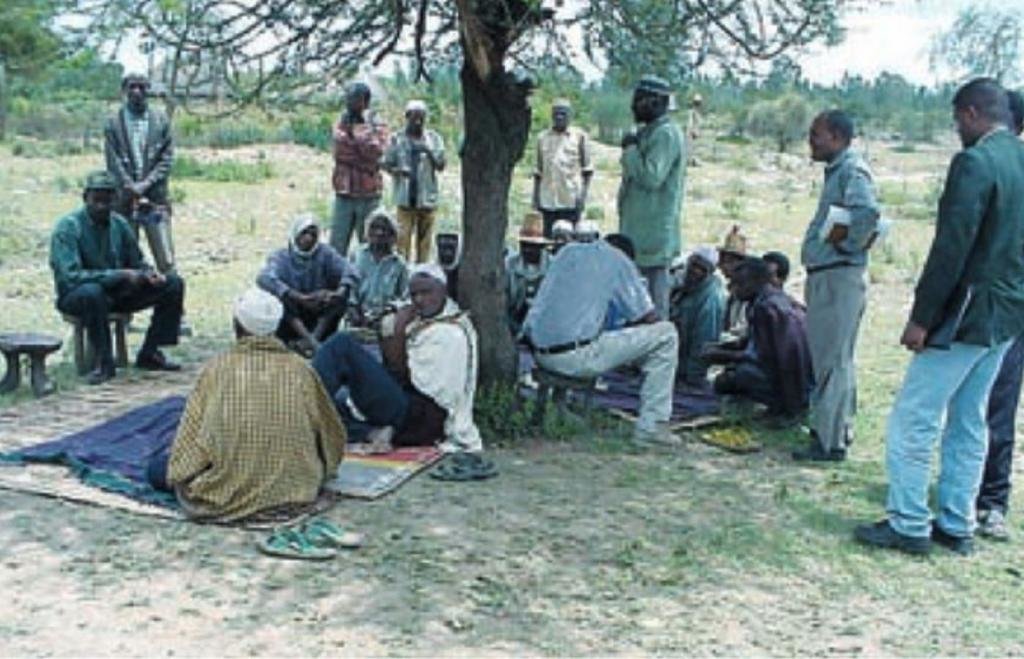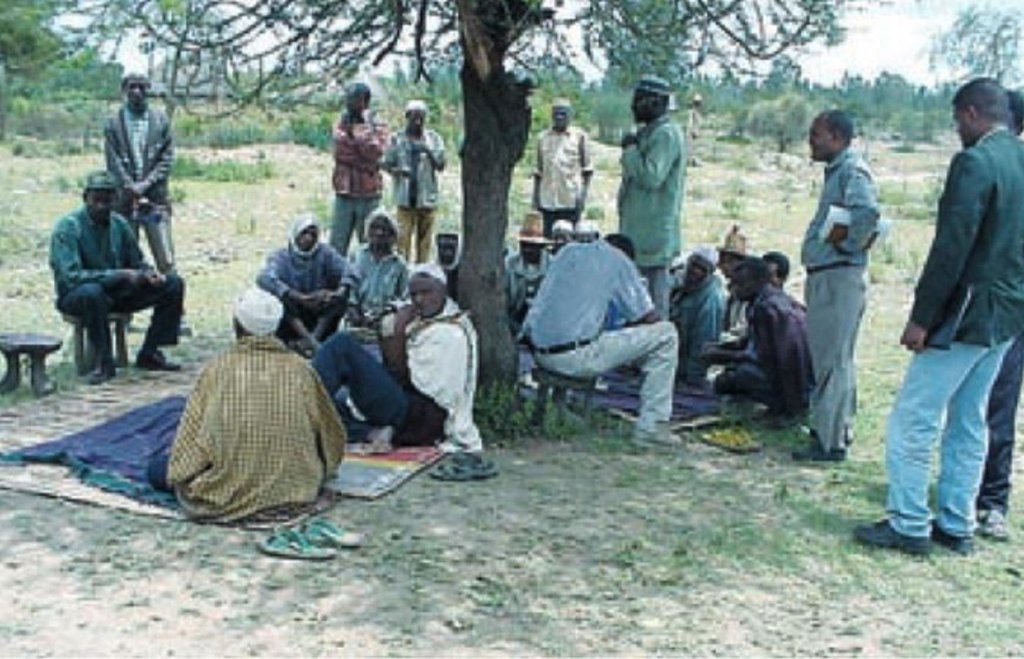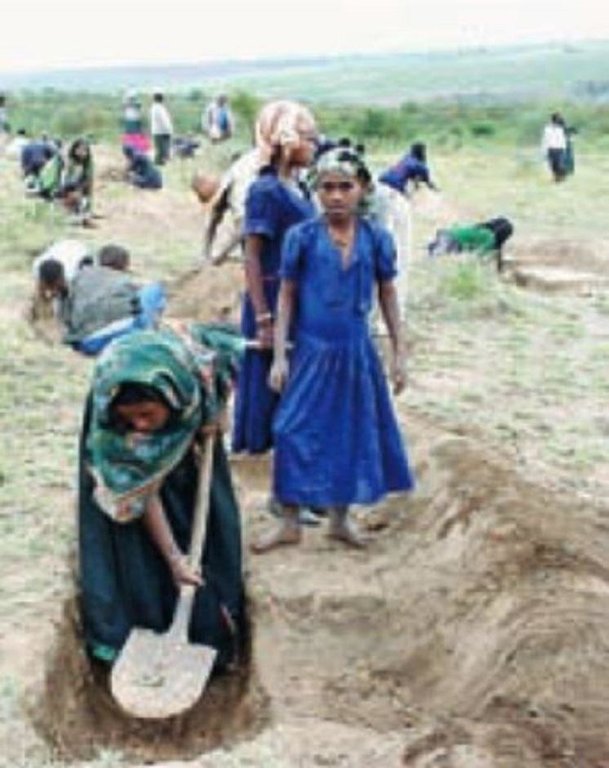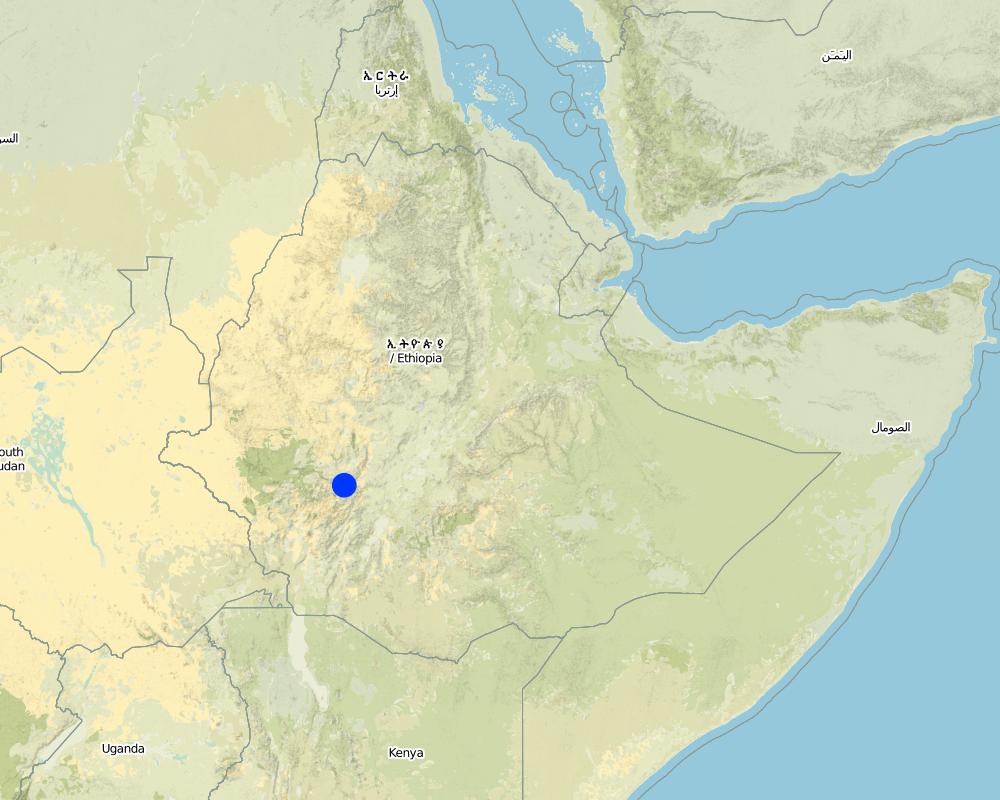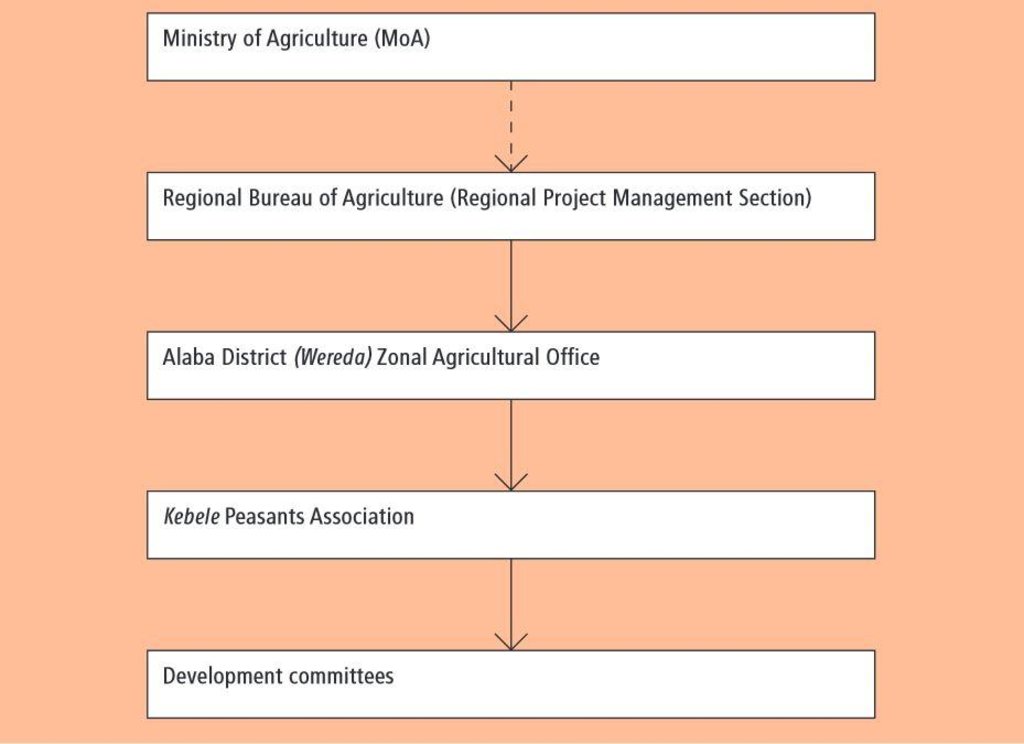Local level participatory planning approach [Эфиопия]
- Создание:
- Обновить:
- Составитель: Daniel Danano
- Редактор: –
- Рецензенты: Fabian Ottiger, Deborah Niggli
approaches_2388 - Эфиопия
Просмотреть разделы
Развернуть все Свернуть все1. Общая информация
1.2 Контактные данные специалистов и организаций, участвующих в описании и оценке Подхода
Название проекта, содействовавшего документированию/оценке Подхода (если применимо)
Book project: where the land is greener - Case Studies and Analysis of Soil and Water Conservation Initiatives Worldwide (where the land is greener)Название организации (-ий), содействовавших документированию/оценке Подхода (если применимо)
Ministry of Agriculture and Natural Resources of Ethiopia (MoA) - Эфиопия1.3 Условия, регламентирующие использование собранных ВОКАТ данных
Составитель и ответственный/-ые специалист(-ы) согласны с условиями, регламентирующими использование собранных ВОКАТ данных:
Да
1.4 Ссылка (-и) на Анкету (-ы) по Технологиям УЗП
2. Описание Подхода УЗП
2.1 Краткое описание Подхода
An approach used by field staff to implement conservation activities, involving farmers in all stages of planning, implementation and evaluation.
2.2 Подробное описание Подхода
Подробное описание Подхода:
Aims / objectives: The Local Level Participatory Planning Approach (LLPPA) starts with the selection of communities based on needs and problem assessment. Then development committees are formed, consisting of one or two technical staff and seven to eight farmers. They are elected by the community through a general assembly of land users.
Stages of implementation: The development committees plan and coordinate development activities. They first conduct a survey of the biophysical and socio-economic conditions of the area. Then problems are identified and prioritised with the community members through participatory rural appraisal (PRA). Land use analysis, followed by the definition of objectives, identification of development options and selection of appropriate SWC interventions, is carried out on a consultative basis. Targets for achievements are established, and resources and inputs are determined. Finally the development committee prepares a work plan. The plan for SWC activities is then submitted to the community leaders, and the approval of the plan is made by the general assembly of land users, in consultation with the technical field staff. The development committee is given the responsibility for organising implementation. The beneficiaries actively participate in this implementation, in maintenance and in utilisation of the assets created, by contributing their labour and resources. Whenever required technical field staff give technical advice during implementation of development activities - area closure for rehabilitation in this case. Participatory monitoring and evaluation of activities is another important element of the approach.
Role of stakeholders: The main purpose of LLPPA is to enhance farmers’ involvement in all steps of the development process, from the initial stages of planning, to implementation of the activities, and in the evaluation of the achievements. A good relationship between land users and field workers, and acceptance as well as support of the development activities by the land users are fundamental prerequisites for fruitful implementation and maintenance of SWC measures.
2.3 Фотографии, иллюстрирующие Подход
2.5 Страна/ регион/ место, где применялся Подход
Страна:
Эфиопия
Административная единица (Район/Область):
Alaba
Более точная привязка места:
South Ethiopia, Ethiopia
Map
×2.7 Тип Подхода
- в рамках проекта/ программы
2.8 Каковы цели/ задачи Подхода
- encourage the involvement of the beneficiary population and the technical personnel in the whole development process (ie initial planning, implementation, monitoring/evaluation) so that sustainable development, leading to improved living conditions is attained, - reduce land degradation (gully formation and landslides, sediment flow into downstream water harvesting and storage tanks) and enhance natural regeneration and fertility of soils in order to increase the productivity of degraded areas: provide livestock feed, fuel and construction wood, and higher crop yields
The SLM Approach addressed the following problems: Difficulties in attaining sustainable development through area closures for rehabilitation are due to: - lacking sense of ownership: land users feel that development attained in enclosures belongs to the government, - lack of awareness about land degradation problems, and the values of conservation measures, - reluctance to maintain activities and protect assets created, - shortage of livestock feed, fuelwood and construction material, - increasing land degradation problems (on- and off-site) due to improper land use and poor farming practices, - food insecurity and poverty
2.9 Условия содействующие применению Технологии/ Технологий в рамках Подхода или затрудняющие его
Наличие/ доступность финансовых ресурсов и услуг
- затрудняют
Lack of financial resources: >90% of the community members are poor.
Treatment through the SLM Approach: Provision of hand tools by the project. Provide training to raise awareness about benefits.
Нормативно-правовая база (землевладение, права на земле- и водопользование)
- затрудняют
Land tenure (land is state and public property)
Treatment through the SLM Approach: Assure land user rights and provide certificates
The existing land ownership, land use rights / water rights moderately hindered the approach implementation Area closures would provide better opportunities and advantages to the beneficiaries if hillsides were distributed to individual farmers, and if they were provided with user right certificates for the plots developed by them. In that case each farmer would give more attention to the protection and maintenance of assets developed.
Осведомленность в области УЗП, доступность технической поддержки
- затрудняют
1) Cultivating steep slopes due to overpopulation and land subdivision (holdings of 0.25-0.5 ha/household).
2) Deforestation: illegal cutting of trees due to lack of fuel/construction wood, letting livestock into closed areas. Lack of management plans for planted trees.
3) Overgrazing of sloping lands resultng in severe gullies (on >50% of the land) and landslides. No controlled grazing
Treatment through the SLM Approach: 1) Apply appropriate land use practices according to land potential and apply SWC practices. Alternative income generation.
2) Training and awareness raising on how to assume responsibilities to protect the assets developed. Plant trees in woodlots and provide alternative energy sources (e.g. kerosene)
3) practise zero grazing, cut-and-carry and/or controlled grazing
другие
- затрудняют
Lack of awareness: Lack of awareness about soil degradation and appropriate management practices.
Treatment through the SLM Approach: Awareness raising through training and awareness creation seminars.
3. Участие и распределение ролей заинтересованных сторон
3.1 Заинтересованные стороны, участвующие в реализации Подхода и их роли
- местные землепользователи/ местные сообщества
In the approach area women's participation is more than 50% (and this is increasing) in the implementation of SWC measures. However, women are still not playing a sufficient role in decision making, due to cultural norms/values.
- эксперты по УЗП/ сельскому хозяйству
- государственные власти (отвечающие за планирование или принятие решений)
- международные организации
3.2 Участие местных землепользователей/ местных сообществ на разных стадиях реализации Подхода
| Участие местных землепользователей/ местных сообществ | Перечислите участников и опишите их вовлеченность | |
|---|---|---|
| инициирование/ мотивация | интерактивное | self-motivation: few farmers take the initiative |
| планирование | интерактивное | initiated by technical staff, motivated by the development committee: identify problems, prioritise them and seek solutions |
| выполнение | интерактивное | community is responsible for implementation, some incentives are given for motivation: farmers are organised into working teams |
| мониторинг/ оценка | пассивное | initiated by extension agents, annual evaluation during community meeting |
| Research | нет | none |
3.3 Схема реализации (если имеется)
Описание:
The Regional Bureau of Agriculture provides the technical support and coordinates the programme at the regional level. It is linked but not directly accountable to MoA. The Zonal office participates in the monitoring and evaluation of the activities and also provides technical advice. Kebele is the lowest administrative unit formed of different villages. Several Kebeles make a Wereda. Development committees are assigned by the general assembly and comprise members from farmers/community and the development agents working in the area.
3.4 Принятие решений по выбору Технологии/ Технологий УЗП
Укажите, кто принимал решение по выбору применяемой Технологии/ Технологий:
- в основном землепользователи при поддержке специалистов по УЗП
Поясните:
Made by the community/land users in consultation with SWC specialists/extension workers.
Decisions on the method of implementing the SLM Technology were made by mainly by land users supported by SLM specialists. Made by the community members based on the plan of action prepared by the development committee (comprising farmers and technical staff).
4. Техническая поддержка, повышение компетенций и управление знаниями
4.1 Повышение компетенций/ обучение
Проводилось ли обучение землепользователей/ других заинтересованных лиц?
Да
Тип обучения:
- курсы
Рассматриваемые темы:
Extension workers and Wereda district SWC specialists are given regular training on LLPPA and area closure management. Community leaders and the development committee are trained every year on the various techniques of soil conservation. Two to three day awareness creation seminars are held for the community in general. The awareness creation programme played a significant role.
4.2 Консультационные услуги
Есть ли у землепользователей возможность получать консультации?
Да
Укажите, где именно оказываются консультационные услуги:
- на полях землепользователей
Описание/ комментарий:
Key elements: training, demonstration of the technology, provision of the necessary inputs for application
Advisory service is quite adequate to ensure the continuation of land conservation activities; The extension service has been adequate, due to support by MoA and donor agencies such as the World Food Programme.
4.3 Институциональная (организационная) поддержка
В ходе реализации Подхода были ли организованы новые институциональные структуры или поддержаны уже существующие?
- да, существенно
Укажите уровень, на котором структуры были укреплены или вновь созданы:
- местные
Укажите тип поддержки:
- финансовая
4.4 Мониторинг и оценка
Являются ли мониторинг и оценка частью Подхода?
Да
Комментарии:
bio-physical aspects were regular monitored through measurements; indicators: chane in slope, sediment trapped in ditch, soil depth, ground cover, amount of biomass, rate of regeneration of trees and shrubs, productivity of livestock, spring water discharge, soil loss, runoff
technical aspects were regular monitored through measurements; indicators: quality of structural measures, survival rate of planted trees
socio-cultural aspects were regular monitored through measurements; indicators: community participation in planning and implementation, trends in the participation of poor and rich farmers, womens' participation and decision making between men and women
economic / production aspects were regular monitored through measurements; indicators: amount of grass produced, household income from enclosures, availability and production of wood for fuel, increas in soil fertility
area treated aspects were regular monitored through measurements; indicators: area treated by structural and vegetative measures
no. of land users involved aspects were regular monitored through measurements; indicators: land users participating in planning, implementation and decision making
management of Approach aspects were regular monitored through measurements; indicators: number of land users participating in the implementation, land users participating in maintenance activities, type of activities undertaken on voluntary basis
There were few changes in the Approach as a result of monitoring and evaluation: As a result of monitoring and evaluation improvements in quality of micro-basins and/or trenches, for example, led to better attaining the standards of technology design initially proposed.
4.5 Научные исследования
Были ли научные исследования частью Подхода?
Да
Напишите подробнее и назовите тех, кто выполнял исследования:
Very little work is done with regard to research in area closure and LLPPA.
5. Финансирование и внешняя материальная поддержка
5.1 Годовой бюджет мероприятий по УЗП в рамках Подхода
Комментарий (например, основные источники финансирования/ ключевые доноры):
Approach costs were met by the following donors: government (national): 10.0%; international non-government ((World Food Programme, WFP)): 40.0%; local community / land user(s) (-): 50.0%
5.2 Финансирование и внешняя материальная поддержка, предоставляемая землепользователям
Предоставлялась ли землепользователям финансовая/ материальная поддержка для применения Технологии /Технологий?
Да
Если да, укажите тип(-ы) поддержки, кто ее предоставил и условия предоставления:
There is considerable support to local institutions: they get more money through selling trees and grass from enclosures, which in turn strengthens the institutions financially and socially. The development committee continues to exist after the project phases out. The same committee could take up other development issues.
5.3 Субсидии на отдельные затраты (включая оплату труда)
- сельскохозяйственные
| Укажите, какие ресурсы были субсидированы | В какой степени | Опишите субсидии подробнее |
|---|---|---|
| семена | профинансированы полностью | |
| Seedlings | профинансированы полностью | |
Если труд землепользователя был существенным вкладом, укажите, был ли этот вклад:
- в обмен на продукты
Комментарии:
Because of poor farmers and the labour intensive activities, they are given 3 kg grain/person day, voluntary labour contribution by the community for activities such as planting, weeding and other management activities is more than 50%.
5.4 Кредитование
Предоставлялись ли в рамках Подхода кредиты на мероприятия УЗП?
Нет
6. Анализ влияния и заключительные положения
6.1 Влияние Подхода
Сумел ли Подход помочь землепользователям внедрить и поддерживать технологии УЗП?
- Нет
- Да, немного
- Да, умеренно
- Да, существенно
Applied conservation measures in areas under closure considerably improve soil and water management, resulting in an increase in soil depth, ground cover, biomass, and in survival rates of planted trees and forage shrubs.
Did other land users / projects adopt the Approach?
- Нет
- Да, немного
- Да, умеренно
- Да, существенно
There has been a high adoption rate (both with and without project support) of the approach as well as the technology - as can be observed in nearby communities.
6.3 Долгосрочная устойчивость мероприятий в рамках Подхода
Могут ли землепользователи самостоятельно (без внешней поддержки) продолжать применение того, что было реализовано в рамках Подхода?
- да
Если да, опишите как:
Land users can continue without support - and are actually doing so where the support for area closure has already stopped.
6.4 Сильные стороны/ преимущества Подхода
| Сильные стороны/ преимущества/ возможности по мнению составителя или других ключевых специалистов |
|---|
| Involvement of land users in decision making (How to sustain/ enhance this strength: More work on empowerment/land use rights.) |
| Encourages working in a team (How to sustain/ enhance this strength: Further strengthen team organisation.) |
| Application of appropriate land use practices contributing to sustainable development (How to sustain/ enhance this strength: Further improvement of productivity by encouraging land users to make maximum use of development achievements.) |
| Rapid benefits obtained: provision of livestock fodder (through cut-andcarry), fuel wood and construction material (How to sustain/ enhance this strength: Expand use of improved planting materials.) |
6.5 Слабые стороны/ недостатки Подхода и пути их преодоления
| Слабые стороны/ недостатки/ риски по мнению составителя или ответственных специалистов | Возможные пути их преодоления/снижения? |
|---|---|
| Dependence on incentives | Improve the methods of using incentives: incentives should be understood as a means for promoting participation rather than as a payment. |
| Low sense of ownership | Distribute the enclosures to individual land users. |
| The involvement of rich members of the community in the development committee is low | Development committee needs to be represented by different target groups. |
| Site guards are given incentives by the project | The community will have to assume this responsibility in future. |
7. Справочные материалы и ссылки
7.1 Методы сбора/источники информации
- выезды на места, полевые обследования
- опросы землепользователей
7.2 Ссылки на опубликованные материалы
Название, автор, год публикации, ISBN:
Escobedo et al (1990) The minimum planning procedures for soil and water conservation in Ethiopia. Assistance to Soil
Где опубликовано? Стоимость?
FAO
Название, автор, год публикации, ISBN:
Voli C et al (1999) The Local Level Participatory Planning Approach for the soil and water conservation
Ссылки и модули
Развернуть все Свернуть всеСсылки
Нет ссылок
Модули
Нет модулей


